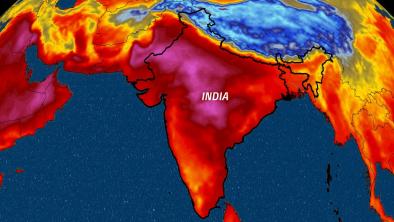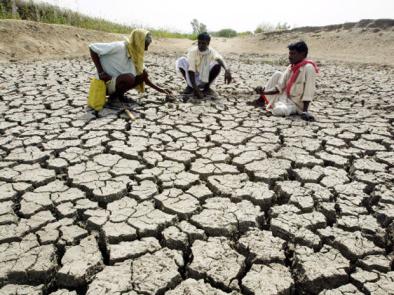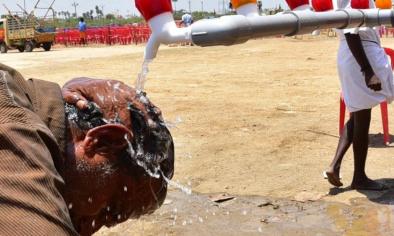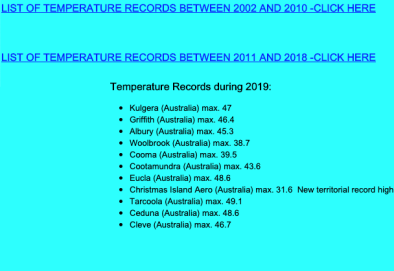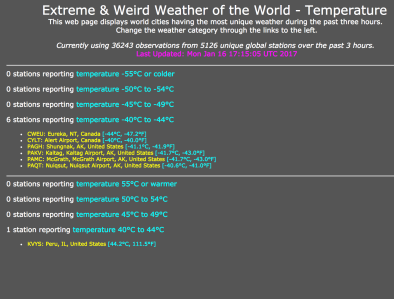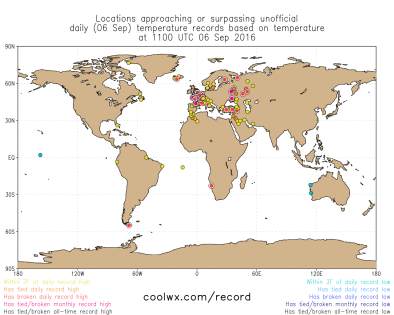India Heat Waves 2019
In March of 2019, heat wave conditions and record temperatures hit southern India and worked their way north to Gujarat,[3][4][5] where heat wave conditions have remained for much of the summer.[7]
In mid-June, temperatures ratcheted up, scorching large parts of north and central India with temperatures of more than 40°C. On June 10, Delhi reached its hottest day on record for the month, reaching 48°C (118°F).[6] On June 15, 49 people died in the state of Bihar due to heat related complications. By June 19, officials in Bihar confirmed the death toll during the prior four days had reached 92.
Global warming has amplified the intensity, duration and frequency of extreme heat and heat waves. Climate scientists have identified the fingerprint of climate change in two of India's most recent and severe heat events—the heat waves of 2015 and 2016.[1][2]
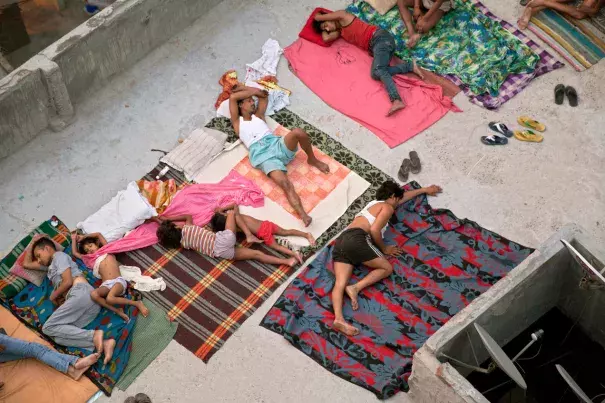
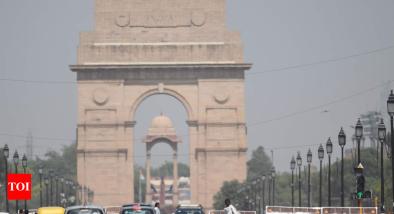
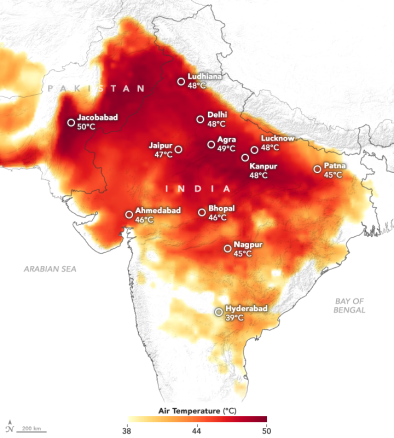
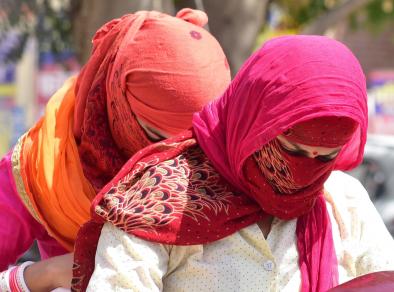
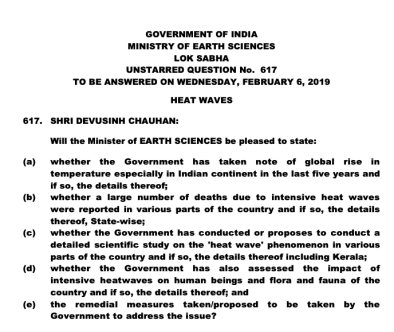
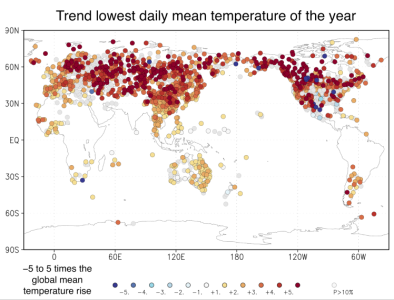
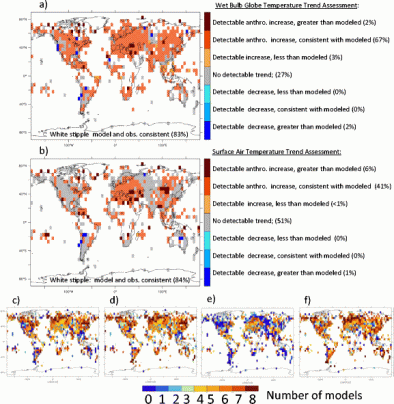
Climate science at a glance
- Extreme heat and heat waves around the world are some of the clearest impacts of climate change on extreme weather.
- Four out of five record-hot days globally are now amplified by global warming.[1]
- May and June are generally some of the hottest months in India, but the number of heatwaves—especially during May—has been increasing.
- Eleven of India’s 15 warmest years have occurred since 2004.[2][3]
- The extreme warmth in India in 2016 would not have been possible without climate change.[4]
- The heat wave of 2015, which killed upwards of 2,500 people, was exacerbated by anthropogenic climate change.[5]
- With heatwave conditions affecting regions across India, 6,167 heat-related deaths were reported between 2010 and 2018.[6]
- "India has experienced [a] manifold increase in the human deaths..." said Minister of Earth Sciences Harsh Vardhan.[6]
Background information
It takes a large amount of heat for meteorologists to call hot conditions in India a heat wave
India is a place that knows heat. During May—the last month before the monsoon rains arrive to cool things down—temperatures can soar to 104°F (40°C) on average. This means a high temperature of 102°F (39°C) in New Delhi would be below average.[7] It takes a lot of heat for meteorologists in India to call a period of hot temperatures an actual heat wave. But what has happened during the last several years has been beyond expectations, even for India.
Climate signals breakdown
Climate Signal #1: Extreme heat and heat waves
Record-breaking temperatures are a classic signal of climate change. As the average global temperature rises and the climate shifts, hot temperatures that were extreme under the old climate are closer to the middle of the new temperature range.[8]
A 2018 study analyzed increases in the frequency and intensity of extremely hot three day periods due to human-caused climate change. The authors found that the shift in the distribution of surface air temperature since the mid-20th century has been profound and most regions have experienced increases in the frequency and intensity of extremely hot three-day periods. Temperatures that were rare prior to the 1980s now occur with regularity.[9]
A 2017 study found that anthropogenic global warming had a significant hand in the temperatures seen during the hottest month and on the hottest day on record throughout much of the world from 1931–2016. The study's results showed that the global trend in warming contributed to the record for hottest day of the year in at least 82 percent of the records over the 1961-2010 period.[1]
Observations consistent with climate signal #1
- Heat waves began in early March in southern India. On March 6, Dharmapuri (a city in the southern state of Tamil Nadu) recorded a maximum temperature of 40.2°C which is the highest temperature ever recorded there in March.[10]
- By late March, heat wave conditions began in the northwestern state of Gujarat.[11][12]
- On June 10, Delhi reached its hottest day on record for the month, reaching 48°C (118°F).[13]
Climate signal #2: Humidity and heat stress increase
As air warms, its capacity to hold water vapor increases, and measurements show that atmospheric humidity is increasing around the globe, consistent with a warming climate.[14] The Northern Hemisphere has had increasingly warmer and more humid summers, and the global area covered by extreme water vapor is increasing significantly.[15]
Exposure to extreme heat is already a significant public health problem and the primary cause of weather-related mortality. (Knutson and Ploshay 2016) find that there has been a detectable human-caused increase in mean summertime heat stress since 1973, both globally and in most land regions analyzed.[16]
India has experienced [a] manifold increase in the human deaths..."
Harsh Vardhan, Indian Minister of Earth Sciences[6]
Observations consistent with climate signal #2
- The southwestern state of Kerala registered 288 sunburn/sunstroke cases in the month of March.[6]
- On June 19, officials in Bihar confirmed the death toll during the prior four days had reached 92.
- Earlier in June, four elderly passengers died of suffocation on a train that runs daily between New Delhi and Thiruvananthapuram, the capital of Kerala state.[17]
Related Content
